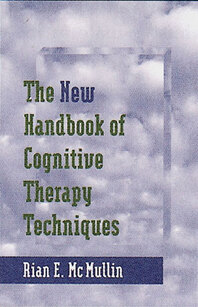
The New Handbook of Cognitive Therapy Techniques
3 November 1999
Territory Rights — Worldwide.
Description
This how-to reference provides the therapist with an immediately usable guide to cognitive therapy.
It describes, explains, and demonstrates over a hundred cognitive therapy techniques, offering for each the theoretical basis, a thumbnail description of the method, case examples, and resources for further information.
Cognitive restructuring therapy is based on the truth: If we change our thoughts, we change ourselves. It tackles, with logic, persistence, and creativity, the distorted beliefs underlying our emotional responses to everyday events. With dozens of soft, hard, and objective countering techniques, as well as methods to encourage perceptual shifts, this book is a huge toolbox for cognitive therapy practitioners.
In this major revision of his 1986 Handbook of Cognitive Therapy Techniques, McMullin has added seven new chapters which explain how to teach basic concepts, how to uncover harmful schemes, and how to resynthesize historical and cultural beliefs. He directs special attention to using these strategies with addicted clients and with severely mentally ill patients. In addition, he has tripled the number of examples, dialogues, case transcripts, and illustrations.
Whether they are new to cognitive therapy or have been using it for years, clinicians will find here a rich, engaging, practical resource.
Cognitive restructuring therapy is based on the truth: If we change our thoughts, we change ourselves. It tackles, with logic, persistence, and creativity, the distorted beliefs underlying our emotional responses to everyday events. With dozens of soft, hard, and objective countering techniques, as well as methods to encourage perceptual shifts, this book is a huge toolbox for cognitive therapy practitioners.
In this major revision of his 1986 Handbook of Cognitive Therapy Techniques, McMullin has added seven new chapters which explain how to teach basic concepts, how to uncover harmful schemes, and how to resynthesize historical and cultural beliefs. He directs special attention to using these strategies with addicted clients and with severely mentally ill patients. In addition, he has tripled the number of examples, dialogues, case transcripts, and illustrations.
Whether they are new to cognitive therapy or have been using it for years, clinicians will find here a rich, engaging, practical resource.





